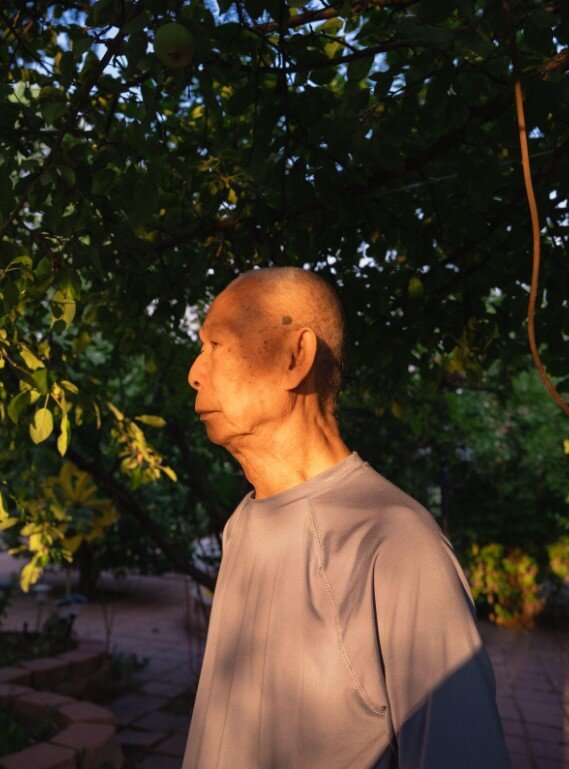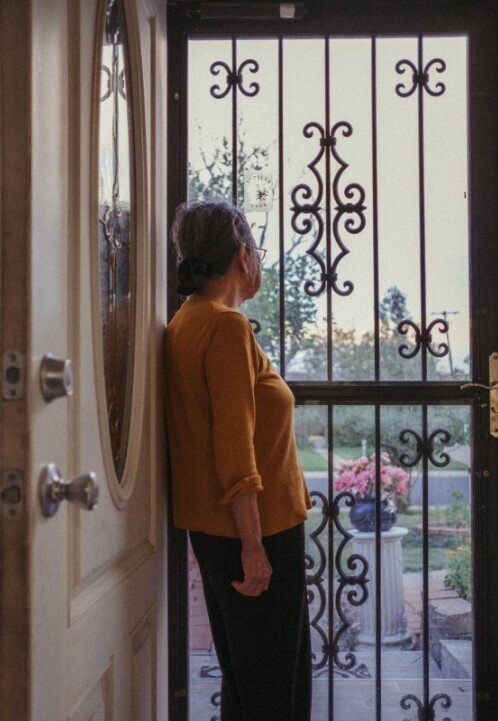A Vietnamese family grows a new garden in America

AURORA, Colo. — Phi Le walks down the steps of her home slowly, gripping the railing with every step. As she reaches the bottom, she turns right into a room filled with photo albums.
“This one here is my favorite,” she says in Vietnamese as she reaches for a tattered photo album, pages falling out. Le flips through the pages, reminiscing about old photographs from Vietnam. “Look at how pretty I was then! This was when my husband and I got married . . . here are photos of our kids.”
Before the turmoil of the Vietnam War in 1955, Le grew up in Hanoi with her family. She married Tai Nguyen and went on to have seven children. “We lived in a beautiful home, we had everything in the world,” Le reminisces.
In 1954, Vietnam underwent a separation between its northern and southern counterparts. The country split based on political ideologies: the North wanted to establish communism, while the South wanted economic and cultural ties to the West.
When the political state of Vietnam changed, Le’s family lost their once-adored home and struggled with the changes in their life, with Tai Nguyen having to go serve in the war and Le raising a family of nine kids on her own.
Ut Tai Nguyen was the youngest of all the siblings and because he didn’t know his father at a young age, he saw how difficult it was for his mother. “It was very hard for my mom, raising all of us without my father,” Ut Tai Nguyen commented.
Ut Tai Nguyen mentions that the kids had to work on top of attending school in order to help the family. Ut Tai Nguyen started doing child labor with the rest of his siblings at a young age. However, he accredits this hardship as a way to mature from a young age, pushing him to put his family first.
As much as they lost the Nguyen family had a little piece of land still in Vietnam, and there they had a garden that the kids used to play in.
“We were very lucky to still have that small piece of land. My mom would plant banana trees, vegetables, ingredients that we could use for our daily meals,” Ut Tai Nguyen recalls.
Le adapted to this new lifestyle without Tai, learning to take care of all her kids and balancing that role as a parental figure for the household. When Tai Nguyen finally returned home after being a prisoner of war for eight years, he wanted the family to leave Vietnam. “The Vietnam I knew from before would never be the same again,” Tai Nguyen says.
In 1994, the family moved to the United States in search of a new start to their life.
Ut Tai Nguyen recalls that the family came to the United States with almost nothing; the family struggled to make a living at first. Seven people shared one car, working on a schedule so every person could get picked up and dropped off for work.
“I didn’t speak English well, it was an unfamiliar country and I missed many parts of the Vietnam that I used to grow up in,” Phi Le admitted.
The changes in Vietnam changed the perspectives of everyone in the family as this new life, although hard, was worth it.
“We tried learning English and working hard. I came here at 22 years old and worked two jobs,” Ut Tai Nguyen recalled. “But thank God for his blessings because now all my siblings have sons and daughters who are able to get an education here in America.”


On the corner of Racine Street, many neighbors would walk by during the spring and summer seasons staring at the beautiful backyard of the house.
“When I bought this house, the backyard was very dirty,” Tai Nguyen said. Through hard work and dedication Le and her husband along with their son were able to transform this garden into the work of art that it is today.
Filled with apple trees, vegetables, and a huge fountain in the middle of it all, the Nguyen’s centralized themselves as key pieces within the American society, “We’ve given this country everything we have, and we are very grateful for our place within it,” Tai Nguyen said. “This garden is a representation of the new life that we have built.”
